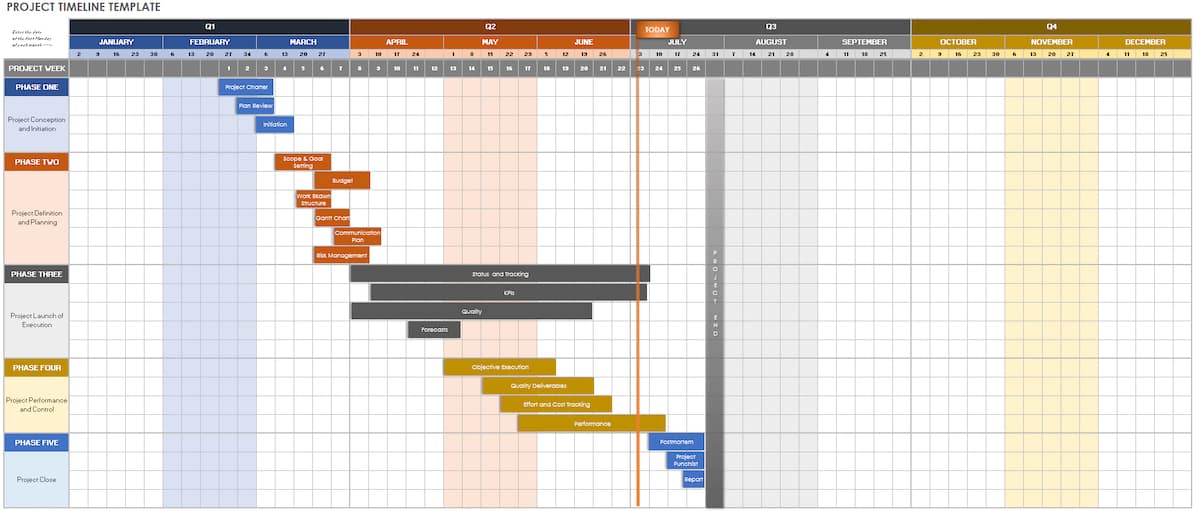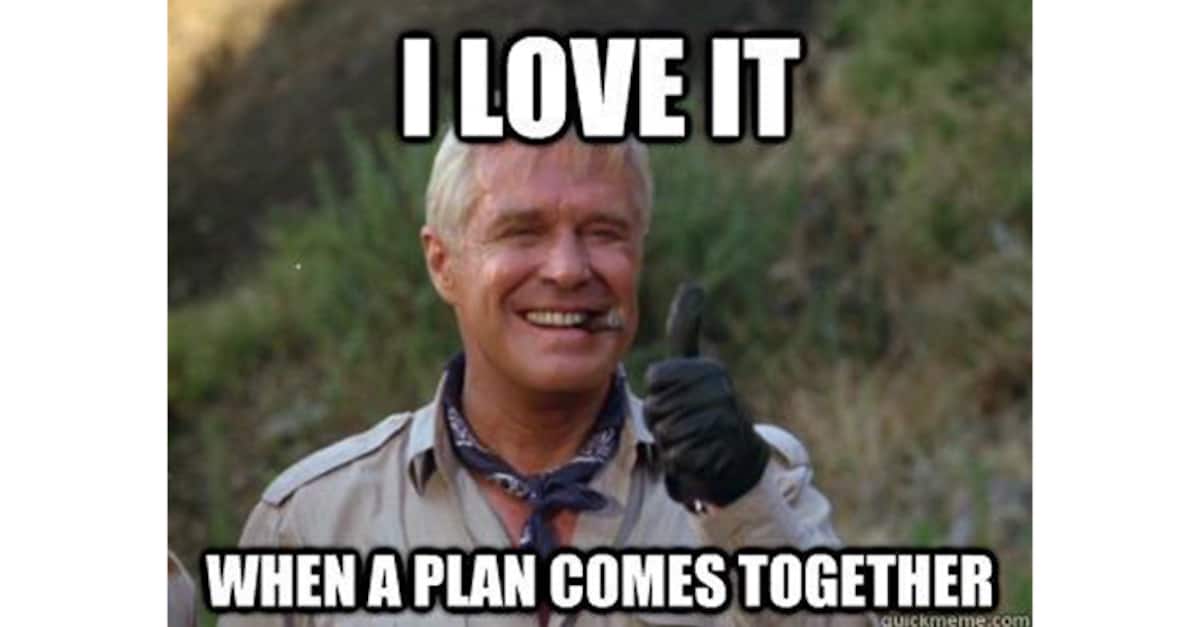Strategic project planning is both art and science. Artistry comes from the Project Manager; how they lead and motivate, their communication style, how they organize data, and provide structure. Typically, this artistry is contained within a planning framework; a standard process that is tested, tried, and true. My interpretation of this typical framework is outlined below in 7 phases. These steps can be downloaded for quick reference here.
Step 1: Identify the business challenge & corresponding strategy
This phase really could be labeled 1A, as a project doesn't even exist yet. Before the project is identified, you need to know the existing problem to fix or the opportunity to capture. Challenge identification is a non-negotiable step in planning. A project not tied to a business challenge isn't a strategic endeavor; it's a waste of resources (usually on someone's personal folly; maybe their need for attention, but who am I to speculate?).
Launching a project without first identifying the business challenge is simply an expensive ego trip.
Nancy Stewart, Talent Alchemists
This first phase is typically a group effort amongst team and/or company leaders. Issues are discussed, perhaps a SWOT analysis is conducted, challenges are prioritized, and strategies are brainstormed.
The identified challenge and related strategy could look something like the following (simplified for the sake of brevity; challenges can certainly warrant a multi-pronged strategic approach):
- Challenge: 45% of our employee population are from historically underrepresented populations; at the leadership level, that percentage drops to 15%. A significant number of employees are not represented by company leaders.
- Strategy: Increase pool of job applicants from historically underrepresented populations. (again, this is a simplified solution. This challenge definitely warrants a discussion about root cause of the problem and a deep dive into potential solutions.)
- Challenge: Client satisfaction scores are down and phone wait times have increased to 5 minutes.
- Strategy: Improve customer service with shorter wait times.
- Challenge: The VP of Engineering has confidentially shared she is pregnant and will be resigning in 6 months.
- Strategy: Enact succession plan for VP of Engineering role.
Step 2: Brainstorm strategic projects
Phase 2 is when we get to the project part of project planning. A team of leaders brainstorms strategic projects to enact the stated strategy. The pros and cons of different projects are compared, impacts to customer and clients considered, and potential time and cost figures reviewed. At the end of this phase, the leadership team should be fully committed to pursuing the chosen course of action.
At this stage, a project leader should be identified, who will drive all subsequent phases.
Step 3: Create a project statement
The project statement summarizes the project's "why." What is the rationale for launching this project; what is the team intending to solve or enhance? Using the challenge & strategy examples from above, here are corresponding project statements:
- Challenge: 45% of our employee population are from historically underrepresented populations; at the leadership level, that percentage drops to 15%. A significant number of employees are not represented by company leaders.
- Strategy: Increase pool of job applicants from historically underrepresented populations.
- Project Statement: Increase diversity of applicants by 40% by end of year by 1) posting consistently on 5 diversity job boards, 2) initiating partnership with 2 college career centers, and 3) sponsoring and participating in a diversity-focused association.
- Challenge: Client satisfaction scores are down and phone wait times have increased to 5 minutes.
- Strategy: Improve customer service with shorter wait times.
- Project Statement: Improve client satisfaction by training all of call center team on efficient use of knowledge base software and reducing call wait times by at least 90 seconds.
- Challenge: The VP of Engineering has confidentially shared she is pregnant and will be resigning in 6 months.
- Strategy: Identify VP of Engineering replacement, allowing for ample training with outgoing leader.
- Project Statement: Ensure smooth leadership transition in 6 months, indicated by no slip in project scope or deadlines, by enacting VP Engineering succession plan.
Step 4: Set project success metrics
In order to gauge a project's success, metrics need to be selected early in the planning process. Based on the project statements, below are possible corresponding metrics. (a specific example of success metrics for a 4-day work week can be found in this article.)
- Project Statement: Increase diversity of applicants by 40% by end of year by 1) posting consistently on 5 diversity job boards, 2) initiating partnership with 2 college career centers, and 3) sponsoring and participating in a diversity-focused association.
- Success Metrics: 1) achieve 40% increase in diverse applicants by end of year; 2) quarter over quarter increase in interviews of diversity candidates; 3) number and percent of hires from new sources; 4) year over year increase in diversity of leadership.
- Project Statement: Improve client satisfaction by training all of call center team on efficient use of knowledge base software and reducing call wait times by at least 90 seconds..
- Success Metrics: 1) Reduction in wait times; 2) Reduction in call times; 3) month over month increase in client satisfaction scores.
- Project Statement: Ensure smooth leadership transition in 6 months, indicated by no slip in project scope or deadlines, by enacting VP Engineering succession plan.
- Success Metrics: 1) Candidate hired in 4 months; 2) Voluntary departure rate of Engineering team compared to same time last year; 3) eNPS of Engineers; 4) Number of days missed deadline compared to average; 5) Amount of scope reduction compared to average.

Step 5: Detail all project logistics
No two ways about this phase, it is a beast. This is where the plan takes shape. Every logistical detail needs to be clearly spelled out. Project logistics include:
- Project team and stakeholders - who is on the team; what are they responsible for? Who are the exec sponsors? The clients?
- Budget - how much money is allotted to this project?
- Compensation/incentives: does the project team have an incentive for an on-time, in-scope completion?
- Deliverables and timeline: what is do when? A project timeline is extremely helpful for this planning activity.
- Meeting schedule: what meetings need to happen to keep activities moving along? What is the cadence of these meetings? Who are the attendees? What is the template agenda (bonus tip: good to plan this in advance; if you can't create a draft agenda, the meeting probably doesn't need to happen).
- Communication plan: who needs project info and when? What is the mode(s) of communication
- Change management: how is change being addressed with those impacted by the project? Does training need to occur? Incentives for new behaviors? Are surveys or additional metrics needed?
Step 6: Project launch
The penultimate phase is all about project management; executing all the details spelled out in phase 5. This step includes monitoring progress and results, making adjustments when necessary, and providing feedback to those involved.
Questions that should be top of mind during this phase include:
- What is going well?
- What isn't going well?
- What can be improved?
- What hurdles need to be removed?
- Are there process problems influencing this project?
- Are there people problems influencing this project?
- What risks is the project facing?
- What are we missing?

Phase 7: Transition to maintenance mode
Rarely does strategic project planning just end. Usually, there is a transition period between the project conclusion and the new process/behavior/venture flourishing. This transition requires a transfer of duties from the project team to the ongoing responsible party. Metrics should continue to be monitored, and an eye should always be kept on areas of improvement.
Oh, and don't forget to relish in your success. Congrats on a project well managed!
Strategic Project Planning PDF
A PPT outline of these phases is available here for your ongoing reference. Once you click the link a copy will be added to the folder where you capture downloads.




